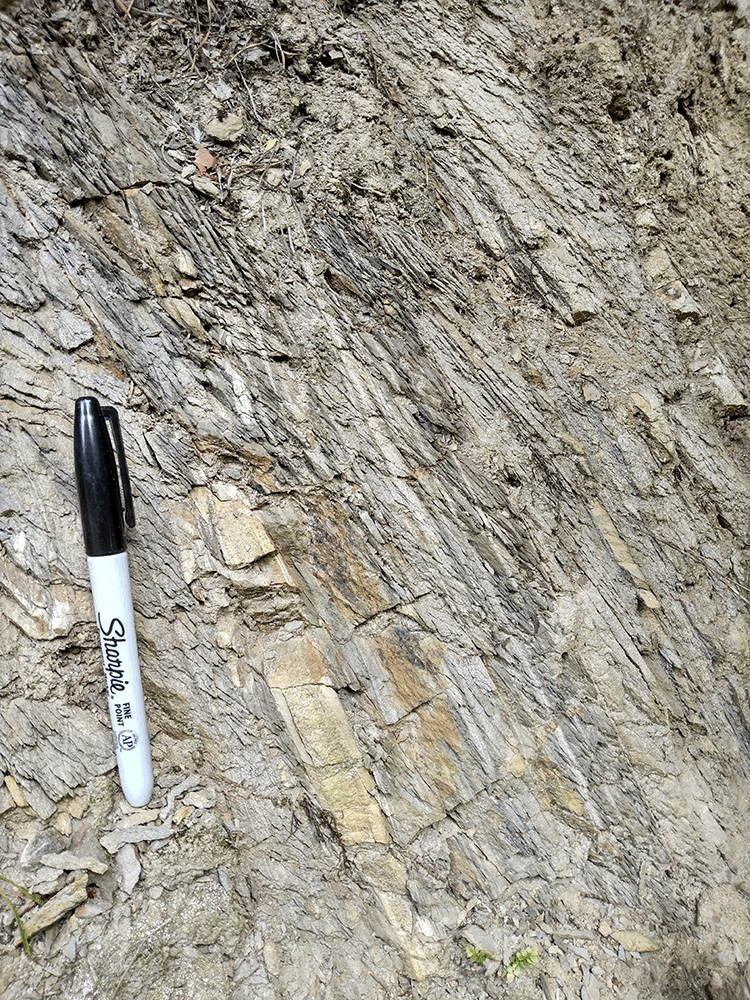One of my favorite tricks is using bedding / cleavage intersections to identify tectonically inverted strata.
On a field trip yesterday to check out soapstone quarries in the Albemarle/Nelson border region, I got to see this lovely example of Lynchburg Group metasediments that showcased a textbook example of the phenomenon:

Bedding was initially horizontal, or close to it, and cleavage (formed under tectonic compression) initially vertical. Subsequent deformation rotated the beds here, first dipping shallowly to the left, then steeply to the left, then vertical, and now steeply to the right. Meanwhile, the cleavage tipped over to the left, and the angle between cleavage went from a right angle to increasingly acute. Now, both bedding and cleavage dip to the right, but bedding is steeper, and cleavage is more shallow. That relationship is a handy shortcut for spotting overturned beds.
I’m grateful to Chuck Bailey from William & Mary for bringing me along on this trip.

I LOVE your blog, even though my technical knowledge is barely elementary, you present compellingly the beauties of geology. Hope you and yours are thriving.
Thanks, Carmen! We’re doing fine.